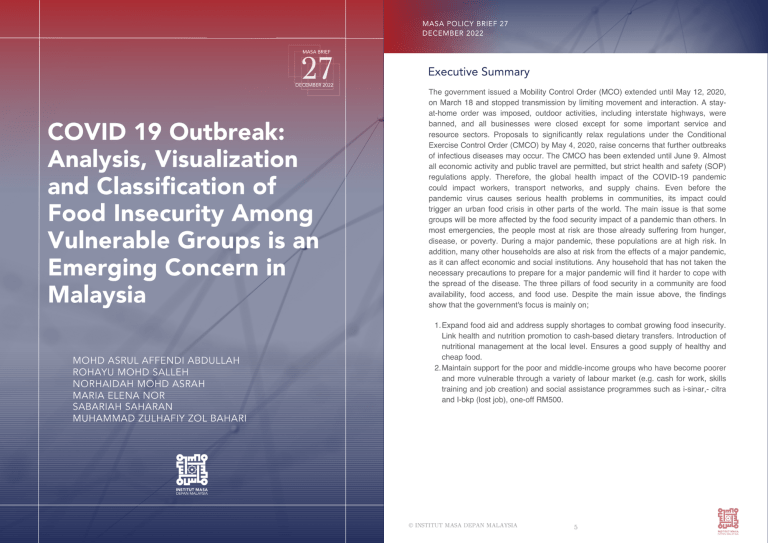The government issued a Mobility Control Order (MCO) extended until May 12, 2020, on March 18 and stopped transmission by limiting movement and interaction. A stay-at-home order was imposed, outdoor activities, including interstate highways, were banned, and all businesses were closed except for some important service and resource sectors. Proposals to significantly relax regulations under the Conditional Exercise Control Order (CMCO) by May 4, 2020, raise concerns that further outbreaks of infectious diseases may occur. The CMCO has been extended until June 9. Almost all economic activity and public travel are permitted, but strict health and safety (SOP) regulations apply. Therefore, the global health impact of the COVID-19 pandemic could impact workers, transport networks, and supply chains. Even before the pandemic virus causes serious health problems in communities, its impact could trigger an urban food crisis in other parts of the world. The main issue is that some groups will be more affected by the food security impact of a pandemic than others. In most emergencies, the people most at risk are those already suffering from hunger, disease, or poverty. During a major pandemic, these populations are at high risk. In addition, many other households are also at risk from the effects of a major pandemic, as it can affect economic and social institutions. Any household that has not taken the necessary precautions to prepare for a major pandemic will find it harder to cope with the spread of the disease. The three pillars of food security in a community are food availability, food access, and food use. Despite the main issue above, the findings show that the government’s focus is mainly on;
- Expand food aid and address supply shortages to combat growing food insecurity. Link health and nutrition promotion to cash-based dietary transfers. Introduction of nutritional management at the local level. Ensures a good supply of healthy and cheap food.
- Maintain support for the poor and middle-income groups who have become poorer and more vulnerable through a variety of labour market (e.g. cash for work, skills training and job creation) and social assistance programmes such as i-sinar,- citra and I-bkp (lost job), one-off RM500.
A few guidelines must be followed to ensure the sustainability of our food supply.
- Availability; Increasing food supply to the most vulnerable people and locating a food bank in a remote area where the community is unable to obtain food.
- Acces; Conduct the mechanism for ensuring food safety and intervention programmes in nutrition.
- Stability; Food security and vulnerability are being monitored, and structural causes of food insecurity are being addressed.
- Sustainability; the programmes zero food waste and natural resource management.
